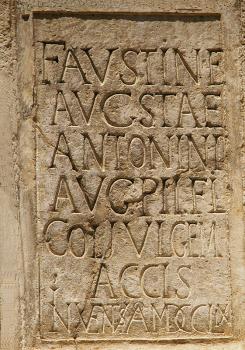American Journal of Archaeology | The Journal of the Archaeological Institute of America
You are here
A New Analysis of Antonine Statuary Groups in Roman Spain
January 2019 (123.1)
A New Analysis of Antonine Statuary Groups in Roman Spain
This article bridges two fields often kept separate: the study of portrait statues and the study of the statue bases and their texts. However, the statues and their inscribed bases are complementary and necessarily must be studied together. The bases provide information about the titulature of the emperors and the dedicants. Portrait heads have been used in the creation of typologies and identification of regional variations. Too often the portrait statues of one imperial family member are studied in isolation from those of other family members and even from their original context. In this paper, I gather for the first time evidence for 11 statuary assemblages representing the Antonine family in Roman Spain. The inscribed bases and portraits are considered along with their display locations and the dedicants. I combine an investigation of visual representations with the study of imperial ideology to learn more about the life of provincial towns in Spain. Although many of these objects were uncovered without scientific excavation, patterns of dedication can, nevertheless, be assessed. This study paves the way for future inquiries into imperial portraiture in Spain and the practices of benefaction beyond dedications to the imperial family.
A New Analysis of Antonine Statuary Groups in Roman Spain
By Rachel Meyers
American Journal of Archaeology Vol. 123, No. 1 (January 2019), pp. 127–155
DOI: 10.3764/aja.123.1.0127
© 2019 Archaeological Institute of America


